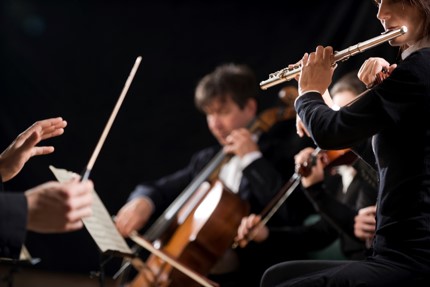Performing a Symphony — of Learning & Development
I happen to be a big music lover, and enjoy both listening and performing as a flutist in the Sharon Concert Band. At last week’s band rehearsal our conductor, Steve, was doing his usual great job of keeping us on tempo, signaling when each section needs to come in, and gesturing to show we should play more piano (Steve often needs to remind us to play more softly). As I was playing, it occurred to me that a symphonic performance resembles the process of training.
In both, people assume distinct roles to accomplish the goal — whether it be performing the piece or executing the training program. And both require a specific process, anchored by practice, to reach those goals.

A symphony (or other musical piece) begins in the mind of a composer, who creates the music to be played. After learning the piece of music, the conductor rehearses the musicians in preparation of performing the symphony.
An instructional designer, similar to a composer, authors the learning solution. A trainer (“conductor”) then takes over, using the leader’s guide (music “score”) and teaches the learners (“musicians”) the material they need to know. A trainer may use visual aids or workbooks to guide the learner, just like a conductor uses a baton to lead musicians and keep the beat.
A symphony may feature a few soloists throughout the piece. A soloist shines in an orchestral performance, much like an active participant stands out in the classroom. A section leader in each instrument group organizes the section, much like a facilitator may help “conduct” a breakout group in classroom instruction.
While musicians and learners “rehearse” all together, each “musician” must put in individual practice time to learn the material. During a learning session, the trainer may break the learners into groups, where each group can work on a directed activity and then share the results with the entire classroom. Likewise, a conductor rehearses one group of musicians at a time, such as the flutes, to work on a specific part. Afterward, the entire orchestra can play together.
A successful symphonic performance depends both on the musicians rehearsing together (as in classroom instruction) and each player practicing (or learning) on his or her own. Facilitation by an experienced conductor, or trainer, brings out the best in the musicians or learners. Each person has his or her “part” to play, and each role must be “performed” to the best of the performer’s abilities to achieve a winning final product.


